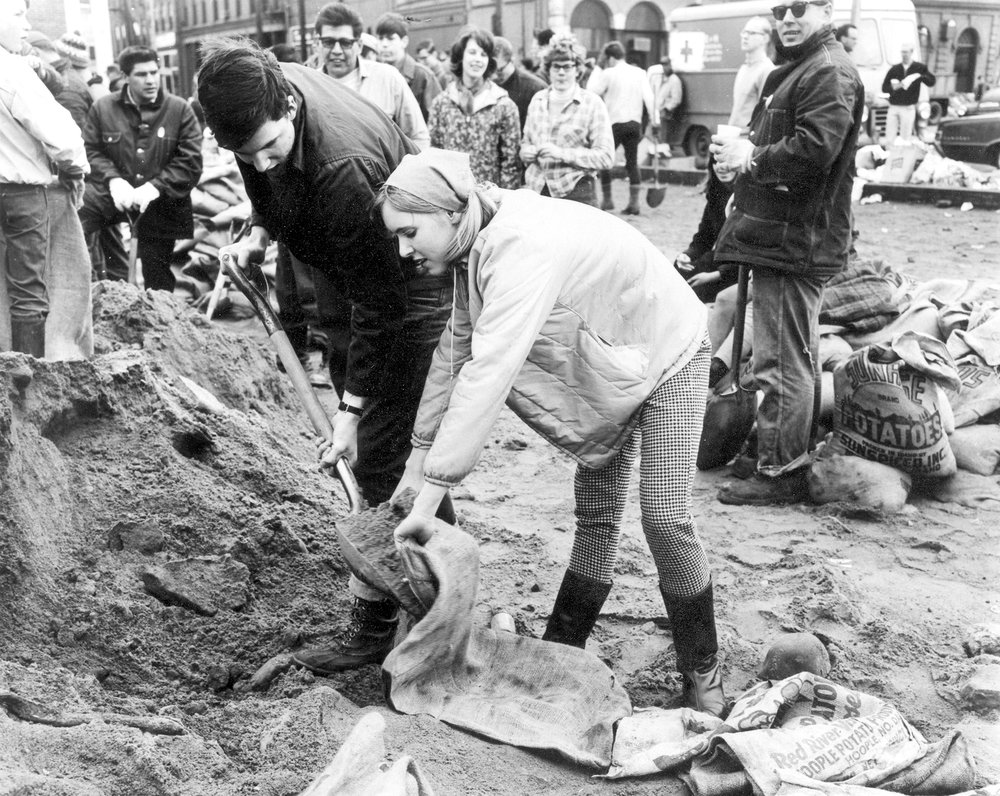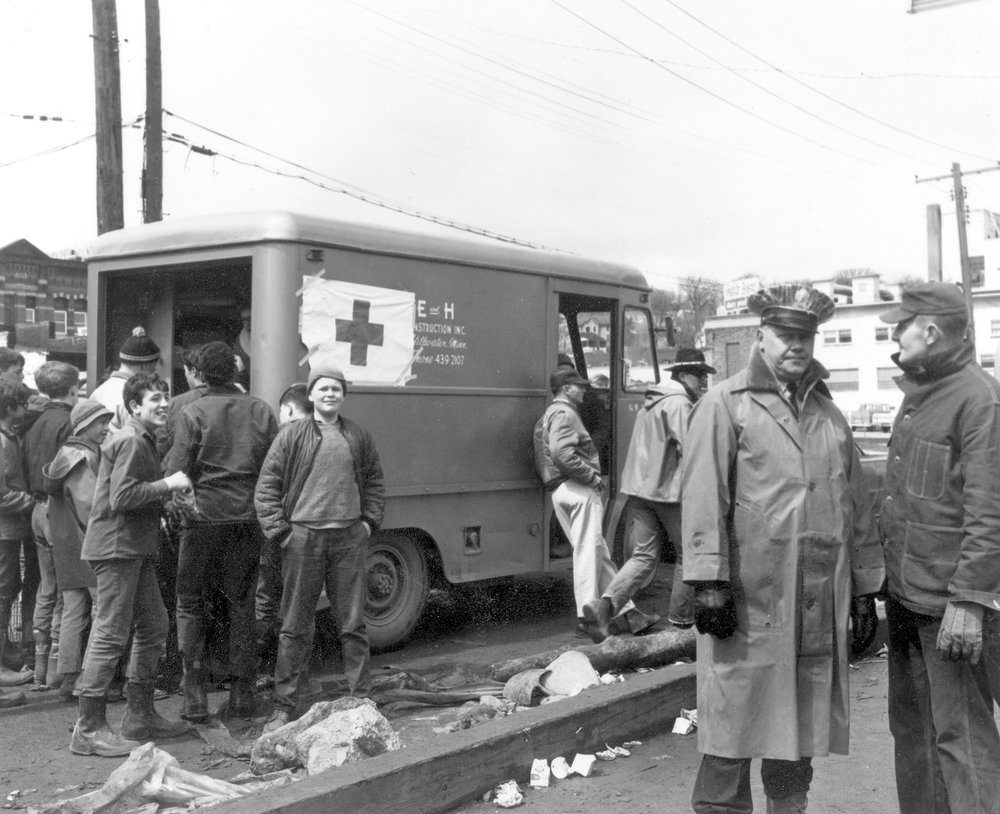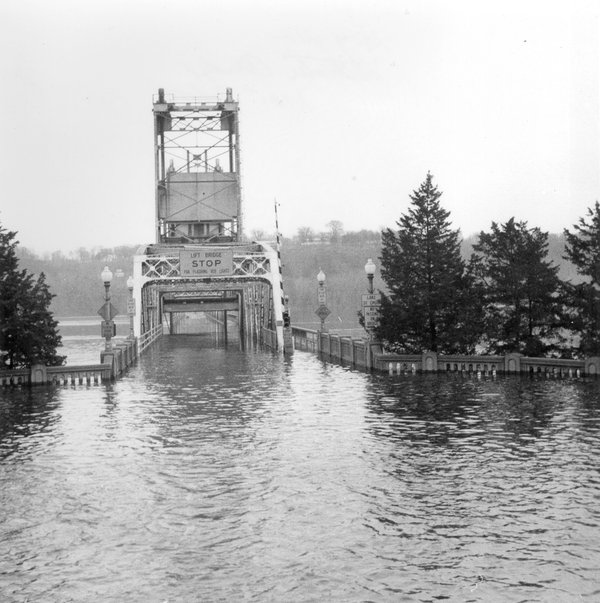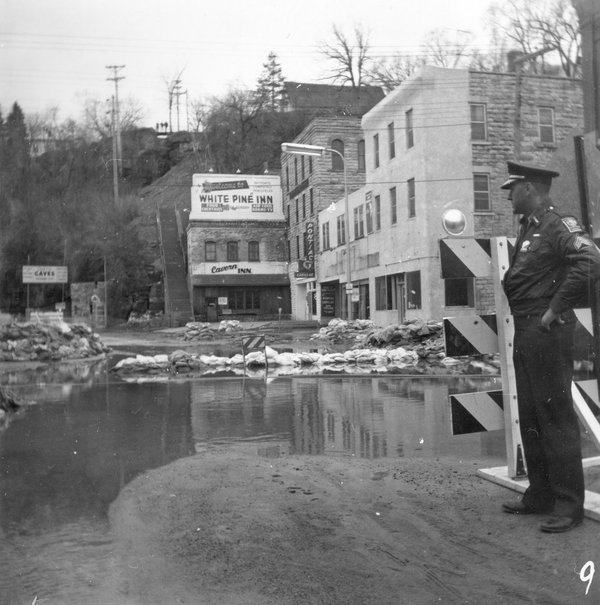The Flood of 1965
In the early spring of 1965, the Mississippi River and its tributaries—including the St. Croix River—experienced unusually heavy rainfall. This added to the heavy snow runoff and raised the Mississippi and St. Croix Rivers well above flood stage.
Knowing the devastation that surely would occur without their help, St. Croix Valley residents, school children and 50 inmates from the Minnesota Correctional Facility farm colony teamed together. Starting on April 10, 1965, they constructed a dike to save Stillwater's downtown area. Because of the large number of teenagers helping to build the dike, shovel sand into sandbags, a large painted sign was placed atop the dike saying "Teenagers' Dike."
Other river communities were also facing the onslaught of water. Dikes were constructed on the Minnesota River and the Mississippi. Many of these earthen dams could not hold back the volume of water and the dikes at Mankato, North Mankato and Chaska gave way and the volunteers were ordered to higher ground after loosing the battle with the river.
Minnesota Governor Rolvaag and Wisconsin Governor Warren Knowles visited the flooded areas. President Lyndon Johnson flew in from Washington D.C. to view the damage in a brief visit on April 14. Along the St. Croix, the Andersen Windows factory in Bayport closed because of the high water. On April 15, because of the ever-rising water, city and county officials decided that all "pedestrian or moving vehicles" would be prevented from entering the business district of Stillwater. This effectively sealed off downtown Stillwater for the first time in history.
The St. Croix River finally crested at 694.07 feet above sea level on Easter morning, April 18, 19 feet above normal levels. The "Teenagers' Dike" held. The flood was not only unique because of the water level, but because people joined together to save the community. Roger Peterson, a Stillwater city council member during the flood, recalled that he received a call from a Minneapolis man at 6 a.m. Easter morning. The man wanted to know if it would be all right if he came over with a car load of other volunteers and help in any way he could. Peterson responded by saying "sure, come on over!" The man on the phone was blind.
After the crest, the city of Stillwater re-opened on April 21. Hooley's Supermarket created a commemorative medallion. "This medallion was designed to honor those who worked so hard to save Stillwater from a flood disaster," Jack Hooley said. The medallions, with a picture of the "Teenager's Dike" sign on them, were given away free with every purchase at both Hooley grocery stores in Stillwater.
As for the sign that was placed on the dike that simply read, "Teenager's Dike," it was carefully taken down when the dike was hauled away and placed in the collections of the Washington County Historical Society. The sign is still there, as a true symbol of how people from all walks of life can gather together and prevent a disaster in their own community.
—Brent Peterson
Brent Peterson is Executive Director of the Washington County Historical Society.




